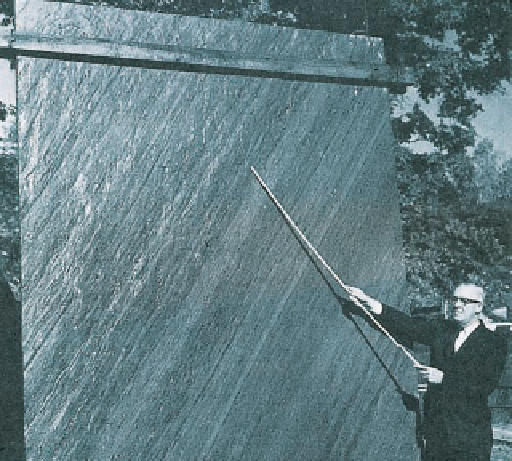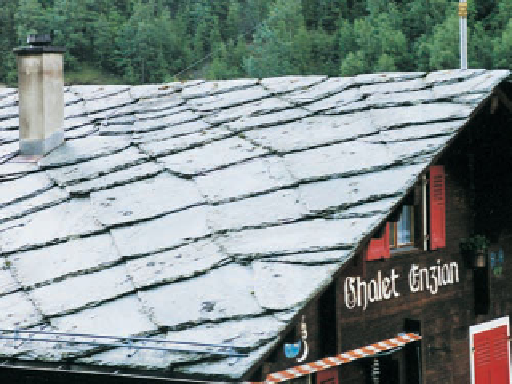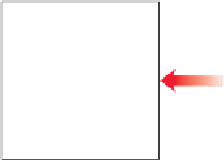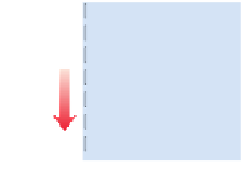Geology Reference
In-Depth Information
◗
Figure 7.9
Foliated Texture
◗
Figure 7.10
Slate
Pressure
Pressure
Random arrangement
of elongated minerals
before pressure is
applied to two sides
Elongated minerals
arranged in a parallel
manner as a result of
pressure applied to two
sides
Pressure
Pressure
Hand specimen of slate.
a
Elongated minerals
arranged in a parallel
manner as a result of
shear
When rocks are subjected to differential pressure, the mineral
grains are typically arranged in a parallel manner, producing a foliated
texture.
a
This panel of Arvonia Slate from the Albermarle Slate Quarry,
Virginia, shows bedding (upper right to lower left) at an angle to the
slaty cleavage.
b
Photomicrograph of a metamorphic rock with a foliated texture
showing the parallel arrangement of mineral grains.
b
Another fairly common foliated metamorphic rock is
amphibolite
. A dark rock, it is composed mainly of hornblende
and plagioclase. The alignment of the hornblende crystals
produces a slightly foliated texture. Many amphibolites result
from intermediate- to high-grade metamorphism of basalt
and ferromagnesian-rich mafi c rocks.
In some areas of regional metamorphism, exposures
of “mixed rocks” called
migmatites
, having both igneous
and high-grade metamorphic characteristics, are present
(
◗
Figure 7.14). Migmatites are thought to result from the extre-
mely high temperatures produced during metamorphism.
However, part of the problem in determining the origin of
migmatites is explaining how the granitic component formed.
According to one model, the granitic magma formed in place
Slate roof of Chalet Enzian, Switzerland.
c


























































































































































































































































































































Search WWH ::

Custom Search